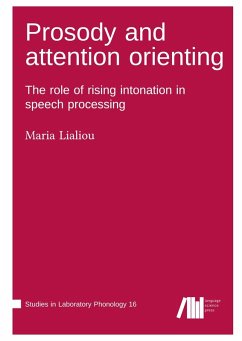Humans are confronted everyday with an influx of sounds coming from several sources. In a given auditory environment, some of the sound events might be unexpected, rare, or new. Our cognitive system has the ability to detect such sounds, and consequently activate an attention orienting response. This book provides an in-depth investigation of the interplay between prosody and attention orienting during online speech processing by using two complementary experimental methods, electrophysiology and pupillometry. In particular, it examines the cognitive and functional relevance of intonation for the orienting response in speech, emphasising the crucial role of rising contours. More specifically, it investigates the influence of prosodic structure, showing that rising tones at constituent edges attract attention similarly to accentual rising tones, challenging important tenets of prosodic theory and typology. The book shows that contextual expectations shape the orienting response, extending insights beyond purely acoustic cues to pragmatically meaningful linguistic signals. Finally, much like cues from auditory cognition, rising tones activate both involuntary and voluntary attentional mechanisms - the former driven by signal-based acoustic cues, while the latter arise from contextual influences guiding voluntary attention orienting. Taken together, the findings in this book enhance our understanding of the role of intonation in attention orienting, emphasising the significance of rising tones. The book establishes key connections to general cognition and individual variability while exploring potential extensions for an architecture of attention orienting in spoken language.
Bitte wählen Sie Ihr Anliegen aus.
Rechnungen
Retourenschein anfordern
Bestellstatus
Storno








